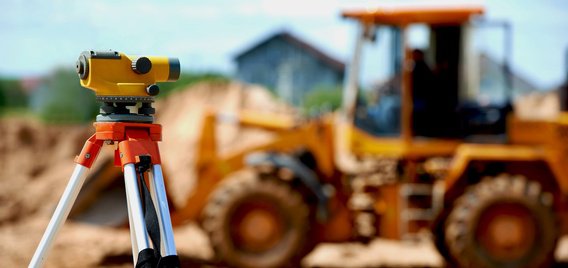Buildability in construction

|
Buildability is a pre-construction exercise that assesses designs from the perspective of those that will manufacture, install components and carry out the construction works. It should not be confused with value engineering (which is used to solve problems and identify and eliminate unwanted costs) though some processes are common to both activities.
In very broad terms, buildability should assess elements of the design in relation to:
- Achieving the desired final quality;
- Meeting the programme requirements;
- De-risking perceived problems, and
- Achieving optimum value for money.
Buildability involves careful study and consideration of:
- The sequence of activities that will take place on- and off-site, taking into account the state of the building and its weatherproof environment at any time;
- Dimensional criteria, setting out and space allowances;
- Use of plant and equipment to save labour and time and prevent possible damage;
- Practicality, flexibility and tolerances;
- Standardisation of components and processes;
- Reduction in complexity to shorten learning curves;
- Identification of appropriate suppliers;
- Prefabrication opportunities;
- Packaging the works and allocation of scope in relation to trade and specialist contracts;
- Ease and order of interface connections and abutments;
- Installation and maintenance access arrangements including long-term replacement;
- Health and safety;
- Temporary works such as propping, facade retention, retaining facilities and trench support, crane supports, formwork, falsework and scaffolding, including gantries;
- Susceptibility to damage and protective procedures in-transit and in-situ;
- Weight and lifting requirements;
- Unloading operations;
- Spare parts, and
- Storage and waste management.
Advances in computer-aided design (CAD) and computer-aided manufacturing (CAM) as well as the introduction of building information modelling (BIM) are immensely helpful in visualising many aspects of buildability. However, the availability of technology does not remove the need for engaging practitioners who have hard-won experience and awareness of on-site practicalities and potential pitfalls.
The contractor is often best placed to advise on issues of buildability. And some procurement methods, such as construction management, management contracting and design and build allow early appointment of the contractor to offer advice and feedback on design proposals as they develop.
[edit] Related articles on Designing Buildings Wiki
- CDM.
- CDM planning period.
- Construction manager.
- Construction phase plan.
- Construction strategy.
- Design and build.
- Management contractor.
- Method statements.
- Modular building.
- Offsite manufacturing.
- Packaging.
- Pre-construction information.
- Prefabrication.
- Samples and mock-ups.
- Site layout plan.
- Site Waste Management Plan.
- Structural systems for offices.
- Temporary works.
- Tolerances.
- Value management.
Featured articles and news
RTPI leader to become new CIOB Chief Executive Officer
Dr Victoria Hills MRTPI, FICE to take over after Caroline Gumble’s departure.
Social and affordable housing, a long term plan for delivery
The “Delivering a Decade of Renewal for Social and Affordable Housing” strategy sets out future path.
A change to adoptive architecture
Effects of global weather warming on architectural detailing, material choice and human interaction.
The proposed publicly owned and backed subsidiary of Homes England, to facilitate new homes.
How big is the problem and what can we do to mitigate the effects?
Overheating guidance and tools for building designers
A number of cool guides to help with the heat.
The UK's Modern Industrial Strategy: A 10 year plan
Previous consultation criticism, current key elements and general support with some persisting reservations.
Building Safety Regulator reforms
New roles, new staff and a new fast track service pave the way for a single construction regulator.
Architectural Technologist CPDs and Communications
CIAT CPD… and how you can do it!
Cooling centres and cool spaces
Managing extreme heat in cities by directing the public to places for heat stress relief and water sources.
Winter gardens: A brief history and warm variations
Extending the season with glass in different forms and terms.
Restoring Great Yarmouth's Winter Gardens
Transforming one of the least sustainable constructions imaginable.
Construction Skills Mission Board launch sector drive
Newly formed government and industry collaboration set strategy for recruiting an additional 100,000 construction workers a year.
New Architects Code comes into effect in September 2025
ARB Architects Code of Conduct and Practice available with ongoing consultation regarding guidance.
Welsh Skills Body (Medr) launches ambitious plan
The new skills body brings together funding and regulation of tertiary education and research for the devolved nation.
Paul Gandy FCIOB announced as next CIOB President
Former Tilbury Douglas CEO takes helm.
UK Infrastructure: A 10 Year Strategy. In brief with reactions
With the National Infrastructure and Service Transformation Authority (NISTA).























Comments
To start a discussion about this article, click 'Add a comment' above and add your thoughts to this discussion page.